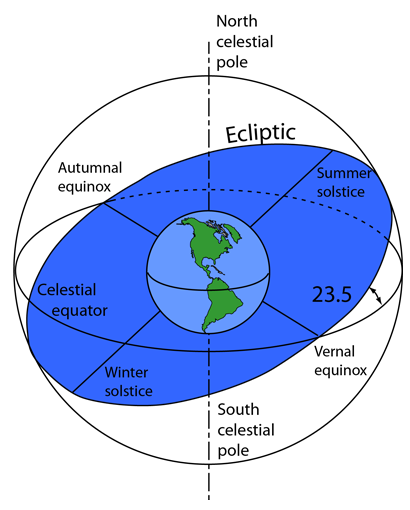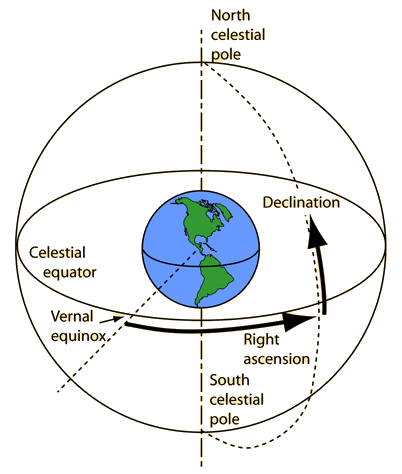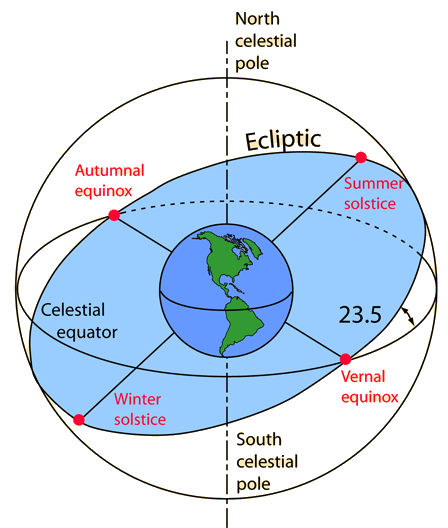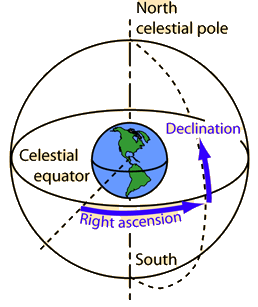Ecliptic Plane
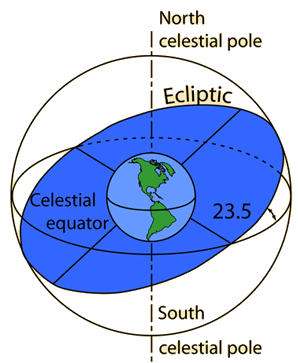
|
If the sun's path is observed from the Earth's reference frame, it appears to move around the Earth in a path which is tilted with respect to the spin axis at 23.5°. This path is called the ecliptic. It tells us that the Earth's spin axis is tilted with respect to the plane of the Earth's solar orbit by 23.5°. Observations show that the other planets, with the exception of Pluto, also orbit the sun in essentially the same plane. The ecliptic plane then contains most of the objects which are orbiting the sun. This suggests that the formation process of the solar system resulted in a disk of material out of which formed the sun and the planets. The 23.5° tilt of the Earth's spin axis gives the seasonal variations in the amount of sunlight received at the surface. |
Pluto 's orbit is exceptional in that its orbit makes an angle of 17° with the Earth's orbit. This has led to a number of theories about Pluto's origin. Mercury is the only other planet which moves significantly away from the ecliptic plane ( 7°) .
Gravity concepts
Orbit concepts
| HyperPhysics***** Mechanics | R Nave |
